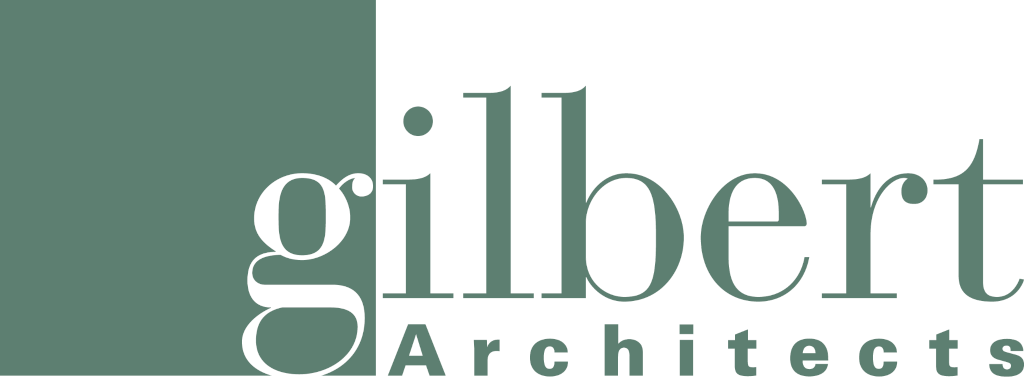Gilbert Architects understands the importance of creating sustainable architecture that not only inspires today’s youth, but also positively impacts future generations. We see it as our responsibility to educate our clients on sustainable design and how it can be incorporated into the projected budget.
Featured Sustainable Projects:
Appoquinimink Environmental Technologies Classroom
This outdoor classroom takes education and sustainable architecture to the next level. The outdoor classroom is almost entirely self-sustainable and features hydronic heating, a solar tree, wind turbine, rain barrels, touch-sensitive computer programing, and transformers.
Bancroft Elementary School – LEED Silver
Maximized daylighting, a geothermal system, waterless toilet fixtures, and energy-efficient lighting and controls are just some of the cost-saving features of Bancroft Elementary School.
Bollman Bridge Elementary School – LEED Silver
Water-efficient landscaping, a geothermal wellfield, and parking accommodations for bicycles and low-emitting and fuel-efficient vehicles helped Bollman Bridge Elementary School achieve LEED Silver certification.
Cheltenham Elementary School – LEED Silver
Bio-detention rain gardens and vegetative roofs help manage stormwater while a nature trail amongst existing mature vegetation offers Cheltenham Elementary School students an outdoor education in sustainable design.
Rainbow Elementary School – LEED Gold
Although Rainbow Elementary School was pursuing at least a LEED Silver certification, USGBC awarded the school LEED Gold based on the extent of achieved sustainable green components which include: geothermal heat pumps with a wellfield located beneath a grass athletic field, water use reduction, optimized energy performance, construction waste management, use of regional materials with recycled content, and the use of low VOC materials contributing to indoor air quality.
Wyncote Elementary School – LEED Silver
Several stormwater management measures were integral to the site design of the new Wyncote Elementary School as well as orienting the building on an east-west axis to maximize daylighting. Recycling demolition materials of the old school and using new materials with recycled content also contributed to sustainability goals.
Youth’s Benefit Elementary School – LEED Silver
High solar reflectance asphalt shingles cover the many sloped roofs of the new Youth’s Benefit Elementary School, helping to keep the building cool during warmer months. A special recycling station is set up in the cafeteria to educate students on sorting recyclables while reducing landfill waste.
Cedarbrook Middle School – LEED Silver
The rebuilding of Cedarbrook Middle School addressed design flaws in the original construction that lead to environmental concerns over the last few decades. The updated facility dramatically increases the overall wellness of the building and provides a 21st Century learning environment.
Patuxent Valley Middle School – LEED Certified
By installing a geothermal wellfield, reusing the building envelope, and incorporating recycled and regional materials, Patuxent Valley Middle School achieved LEED Certified.
Upper Dublin High School – LEED Gold
A variety of sustainable architecture and design methods were used for Upper Dublin High School including: sustainable location, water efficiency, energy efficiency, materials and resources used, and indoor environment quality.
UMBC – The Center for Well-Being – LEED Silver
Over 50% of the total site area for The Center for Well-Being at the University of Maryland, Baltimore County is preserved as open space with pedestrian-oriented paving and seating areas encouraging students to enjoy the outdoor space. To conserve water, all the landscaping was designed with native and adaptive plant species that do not require permanent irrigation. In addition to saving over 68,000 kWh of electricity annually, over 25% of the building’s energy use is sourced from renewable sources to help offset carbon emissions.
Our Sustainable Services Include:
Project Siting
Before designs begin and structures are developed, we consider the placement of the building to utilize winds and solar patterns as well as to minimize deforestation and erosion impacts.
Energy Conservation
Our first goal is to maintain energy efficiency throughout the life-cycle of our buildings. This includes a variety of elements that will reduce the amount of energy needed to run the overall daily operations. We are able to complete this by including the following elements:
- Utilize natural light
- Glass on North and South exposures
- Reflective roofing and wall materials
Air Quality and Water Resources
- Low-water-use landscaping materials
- Incorporate water conservation
- Energy-efficient mechanical and ventilation systems
- Geothermal heat pumps
Sustainable Materials
By using local materials that are recycled and low maintenance throughout the structure, we are able to reduce the overall environmental impact.
